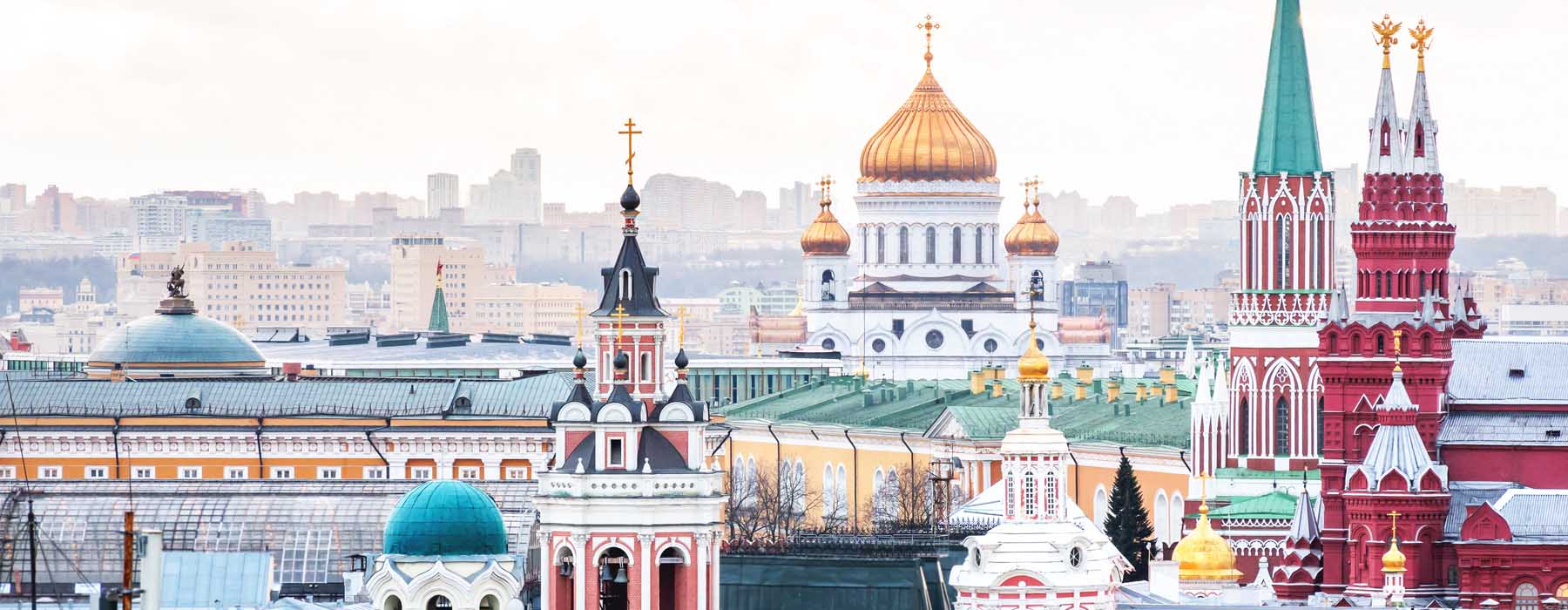January
February
March
April
May
June
July
August
September
October
November
December
Because of its huge size and topography, Russia is divided from north to south into four large sections with large differences in temperature. While cities such as Moscow and St. Petersburg have a relatively mild climate, some cities in the far east of the country (Siberia) can have winter averages in the region of -40°C. Here is a complete overview of the climate in Russia in four main destinations.
St. Petersburg
The city of St. Petersburg has a continental climate, but it is largely tempered by the influence of the nearby Baltic Sea. Although St. Petersburg is further north than Moscow, it has a very similar climate. The only difference is the greater humidity in St. Petersburg due to its proximity to the coast but, in contrast, the city enjoys warmer temperatures than Moscow inland. When it comes to snow (yes, we have to talk about snow in Russia), it's very common in cities much further inland, such as Moscow. The maximum average temperature in Russia's second largest city exceeds 20°C from June to August. July is usually the warmest month, with temperatures topping 25°C-30°C, but with fairly heavy rainfall of 2.75 inches. In winter, the temperature drops, and maximum averages drop to below zero from December to February. January is a very harsh month, with a minimum average of -5°C to -6°C, and temperatures very rarely getting above 0°C. The wind from the Baltic Sea is a feature of every season.
St. Petersburg is very close to the Arctic Circle. Its unique location creates sunny summer days when the sun only sets for a few hours. Conversely, during the winter, it will only put in an appearance for a little over four to five hours a day.
Moscow
Moscow has a continental climate. The Baltic Sea has a slight influence on this climate, but much less so than in St. Petersburg. In Moscow, there are large variations in temperature. Average minimum temperatures are close to -10°C in January, in the middle of winter, but can rise to 25°C in July. In addition to the generally cool climate throughout the year, Moscow also experiences significant humidity. From May to September, average temperatures are above 20°C, and the air is very pleasant. But there are more than ten days of rain a month, totalling between two and three inches.
From November to April, Moscow experiences a period of intense cold. Still above zero (3°C), the maximum average temperature drops to -10°C in January. At this time Moscow is covered in ice and snow. Also, there is more snowfall than rainfall in Moscow.
Siberia
Siberia covers a huge area and there are significant variations in temperature from north to south. The northern part of Siberia, above the Arctic Circle, has a very short summer lasting just one month. In the coldest regions of Siberia, such as Sakha and the Yana River basin (eastern Siberia), the ground is covered in ice several hundred feet thick. In this region, the average temperature over a month can drop to -35°C. The coastal ports in this eastern part of Siberia are only free of ice for two to three months a year.
Further south in Siberia, temperatures are warmer. During the winter months of November to January, temperatures will plummet to an average of -15°C, rising back to over 20°C in July.
The Volga region
Along the Volga, there is a temperate and warm continental climate. During the winter months, the Volga can freeze over and is not navigable. Summer temperatures rise to an average of 23°C in July, and the Volga becomes navigable again (from May). Along its course, the Volga experiences significant variations in rainfall. At its source, there is significant annual rainfall of 23 inches. At its mouth, this drops to just eight inches with an almost desert-like climate.



